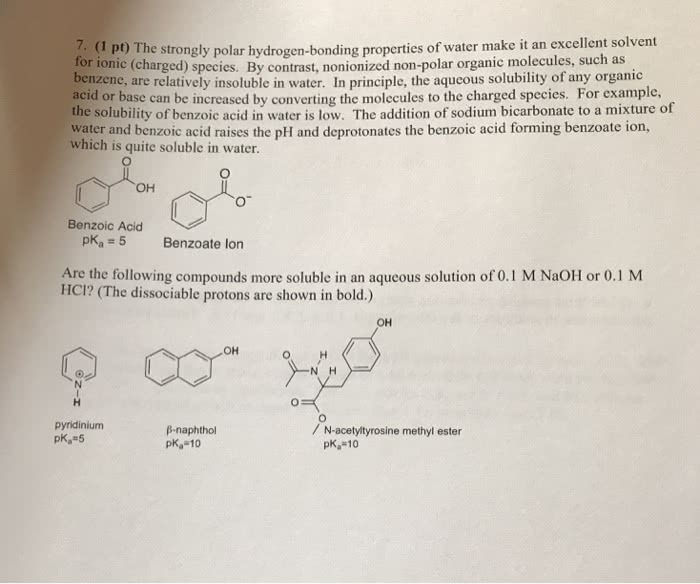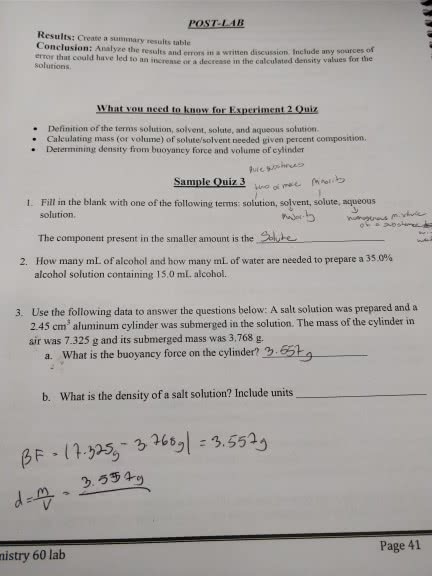CHEM 1011 Study Guide - Final Guide: Molar Concentration, Stoichiometry, Reagent
Document Summary
Many chemical reactions are analyses are carried out in a solution. Solution: homogeneous mixture of two or more substances, consists of solvent (normally the major component) and solute. An aqueous solution is in which water is the solvent. A non-aqueous solution describes solutions in which the solvent isn"t water. Water is an excellent solvent for compounds (as follows) that readily dissolves: ionic compounds, many polar molecules. All soluble compounds ionic compounds are strong electrolytes (compounds which don"t form ions in a solution are called non-electrolytes). Concentration of a solution refers to the amount of a solute dissolved in an amount of solution (unit mass percent, mole fraction, molarity). Mass percent, mole fraction, and molarity express proportion of solution relative to the total amount of the sample (solute and solvent), regardless of sample size. Expresses the relative mass of each substance in the mixture as a percentage of the total mixture.




